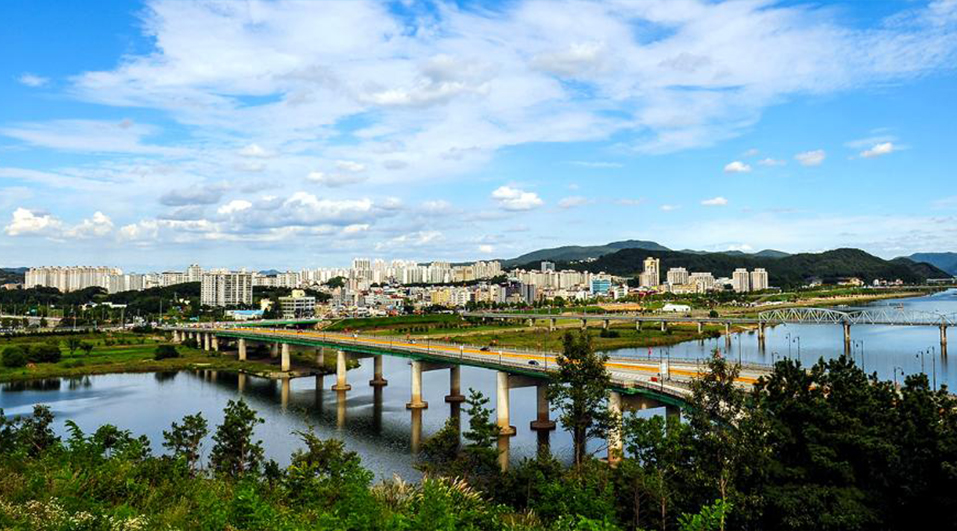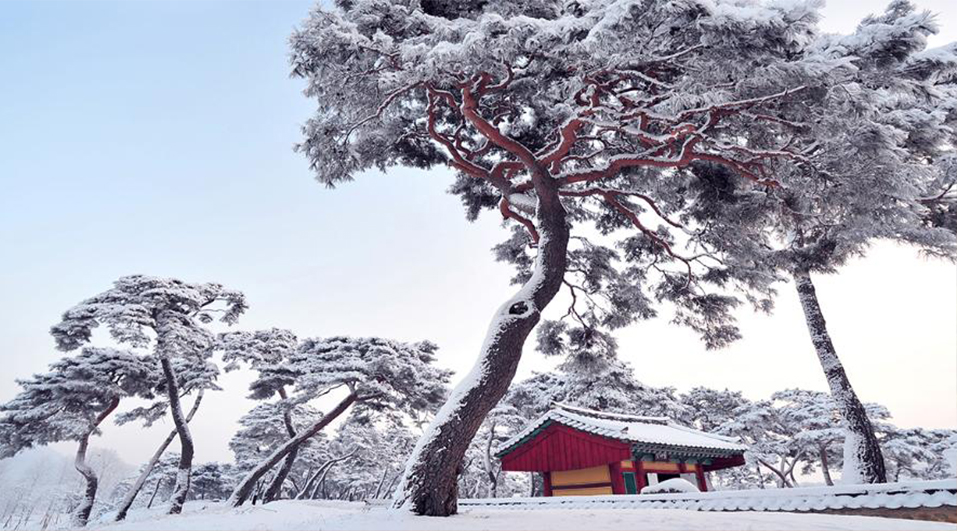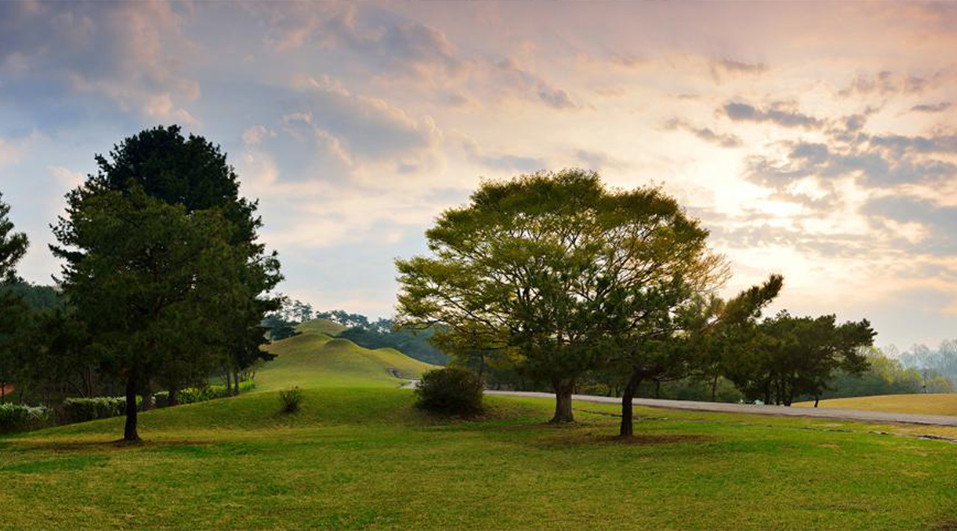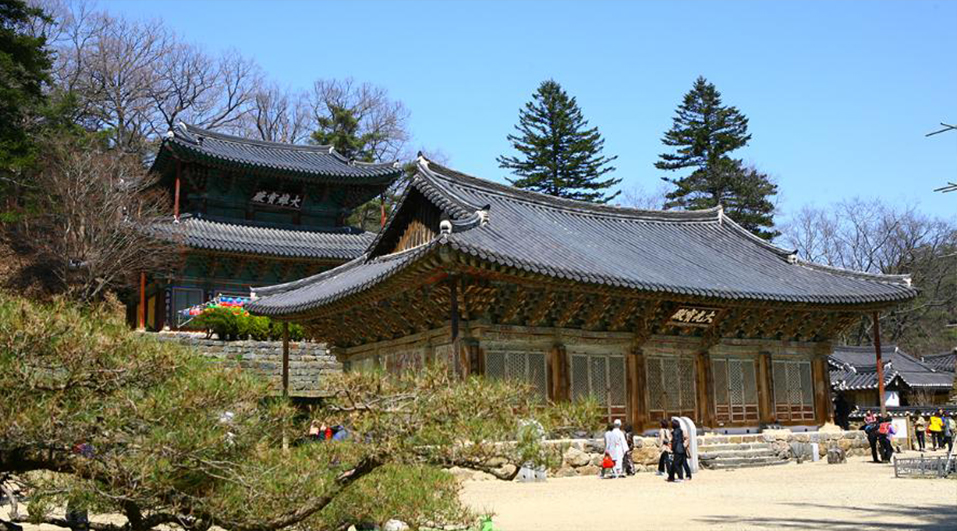Festival aspects
Major Attractions










- Address327-6 Donghaksa 1-ro, Banpo-myeon, Gongju-si, Chungcheongnam-do
- Contact82-42-825-3002
The name of the mountain was given because the ridge leading from the main peak, Cheonhwangbong (845m) to Yeoncheonbong (739m) and Sambulbong (775m), resembles a dragon wearing a chicken crest. Do it. This mountain, which is relatively rugged among the Charyeong Mountains, creates a unique mountain scenery in harmony with the scenery of the smoothly flowing Geumgang River. Gyeryong Mountain is not only considered one of Korea's four famous mountains in feng shui, but the eight scenic views of Gyeryong are especially beautiful and attract many tourists.
- Address567-3 Gapsa-ro, Gyeryong-myeon, Gongju-si, Chungcheongnam-do
- Contact82-41-857-8921
Gapsagugok is a beautiful valley with names carved into rocks from 1 to 9 in the scenic spot that stretches from Gapsa Temple to Sujeongbong Peak. You can enjoy the joy of nature with large rocks and tall old trees harmonizing with the clear valley.
Every year on the 3rd day of the first month of the year, there is a spectacular procession from Gapsa Temple to the parking lot. When you arrive in front of Goemok, Buddhism and folk religion come together to hold the Goemok Daesin Festival to pray for the well-being of the village and the peace of your family. The climax is the holding ceremony where each person writes down their wishes and burns them.
The name ‘Geumgang’ was given because it is as beautiful as silk. The winding stream of Geumgang River is spectacular both in the morning and at sunset. A river that has become the root of the region by harmonizing with Gongju's nature and sometimes its history and culture. It is beautiful because it flows through the center of Gongju, and it is a good place to live because the people of Gongju have flourished civilization by leaning on the river. The golden river flows through the princess.
- Address66-4 Geumseong-dong, Gongju-si, Chungcheongnam-do
- Contact82-41-856-7710
Gongsanseong Fortress (Historic Site No. 12) is a representative castle of the Baekje period and the royal castle that protected Ungjin Baekje (475-538). The walls of Geumseo-ro (West Gate) are more beautiful than any other castles in Korea. If you walk along the castle wall, you can see downtown Gongju at a glance.
- AddressAround 452-3 Woongjin-dong, Gongju-si, Chungcheongnam-do
Gomanaru, filled with our sentiments familiar with the bear totem since the myth of Dangun, is also known as the site of our living folk religion that soothes the vengeful spirit of the bear in the folktale and the origin of the name of Gongju. There is the largest ferry site of the Baekje era, a pine field that tells the sad story of a bear who loved humans, the site of Geumgang River and Ungjindan where ancestral rites were held to bears, and a shrine dedicated to bears.
- Address318-2 Woongjin-dong, Gongju-si, Chungcheongnam-do
- Contact82-41-856-3151
The tomb of King Muryeong (the 25th king of Baekje) was accidentally excavated in 1971 while working on a drainage ditch. It was excavated in perfect condition, retaining its appearance from 1,500 years ago. This is the only royal tomb in ancient Korea where the identity of a person from the Three Kingdoms period can be known, and it provides a glimpse into the splendid and sophisticated aesthetics, creativity, and high-level craftsmanship.
- Address966 Magoksa-ro, Sagok-myeon, Gongju-si, Chungcheongnam-do (567 Unam-ri)
- Contact82-41-841-6221
Taehwasan Mountain, located in Unam-ri, Sagok-myeon, is as large and beautiful as its name suggests, and is home to Magoksa Temple, the headquarters of the 6th Diocese of the Jogye Order. Magoksa Temple is a thousand-year-old temple founded by Jajangyulsa, a high priest of Silla, during the reign of King Mu of Baekje (AD 643). It contains many treasures, and the faded dancheong of Daegwangbojeon Hall creates an atmosphere of an old temple. Next to the temple's Daegwangbojeon and Daeungbojeon are Baekbeomdang and Baekbeom Meditation Path, where Mr. Kim Gu stayed. You can walk or hike slowly as the fragrant pine breeze tempts you.
- AddressDonghaksa Eunseon Falls, Hakbong-ri, Banpo-myeon, Gongju-si, Chungcheongnam-do
This is a waterfall located on the west side of Gyeryongsan National Park, and its name comes from a legend that in the old days, immortals hid here to play. It is the largest waterfall among the many waterfalls in Gyeryongsan Mountain, and the surrounding rock walls and dense forests create a spectacular view. Although it is famous for its scenery combined with fall foliage, the scenery of the ice waterfall in winter is also unique.
- AddressSeokjangni Historic Site, 990 Geumbyeok-ro, Gongju-si, Chungnam (118 Seokjangni-dong)
- Contact82-41-840-8924
The Seokjangri ruins in Gongju are flat ruins, showing the living environment preferred by Paleolithic people. The excavation of the Seokjang-ri Paleolithic ruins was the first in South Korea to reveal that people had lived in Korea since the Paleolithic era and that various cultural layers existed in stages, and it holds a very important position in that investigation, excavation, and research on Paleolithic ruins were carried out systematically. Do it.
- Address111-1 Geumhak-dong, Gongju-si, Chungcheongnam-do
- Contact82-41-840-2336
A wetland has been created below the parking lot of Geumhak Ecological Park, and there are two water sources above. There is a small outdoor stage close to the parking lot, where various cultural exchanges take place. Jumi Mountain, seen from the observatory at the upper water source, looks like an oriental painting, with the water and mountains harmonizing well together. Gongjudaegan trekking from Geumhak Ecological Park to Duribong and Bonghwadae is also good.
- Address
368, Geumbyeok-ro, Gongju-si, Chungcheongnam-do
- Tel



-
Sponsorship
Copyright©The Baekje Cultural Festival








